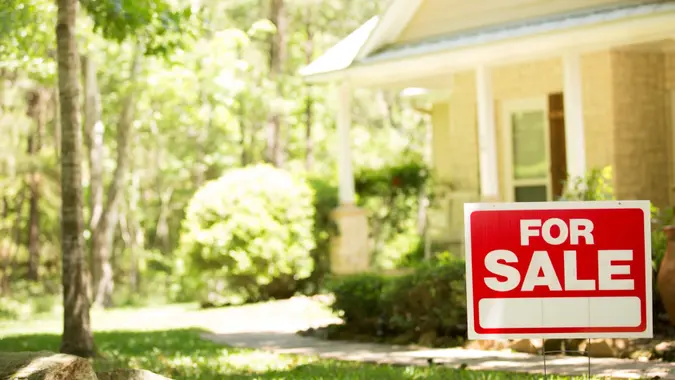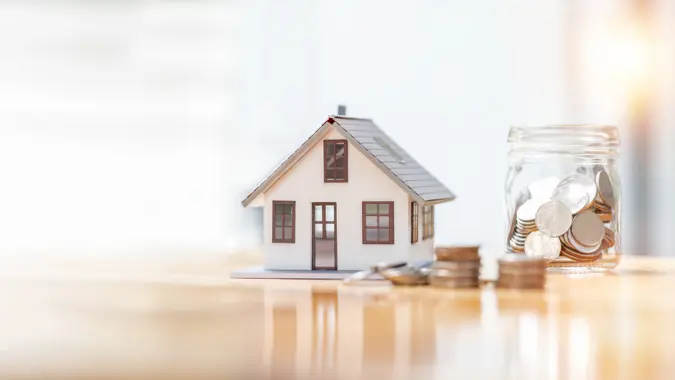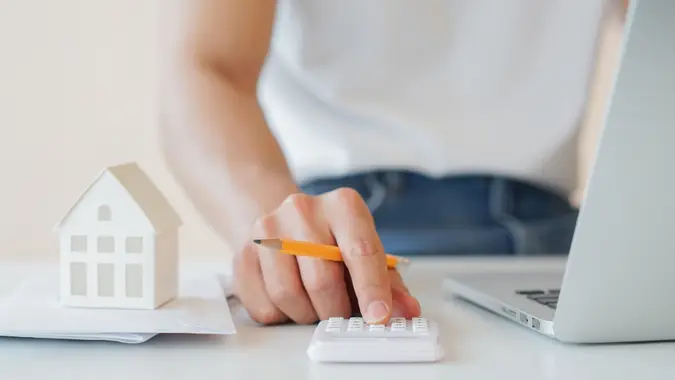Here’s How To Buy a House Without a Credit Score, According to Jade Warshaw
Commitment to Our Readers
GOBankingRates' editorial team is committed to bringing you unbiased reviews and information. We use data-driven methodologies to evaluate financial products and services - our reviews and ratings are not influenced by advertisers. You can read more about our editorial guidelines and our products and services review methodology.

20 Years
Helping You Live Richer

Reviewed
by Experts

Trusted by
Millions of Readers
If you find yourself in the lucky position of being able to buy a house — meaning you’ve saved up a down payment and your income is solid enough to afford a mortgage payment — but you don’t have a credit score yet, is it even possible to buy a home?
While finance experts always emphasize the importance of having a high credit score, according to finance influencer Jade Warshaw, co-host of The Ramsey Show and author of the book “Money’s Not a Math Problem,” you can have a zero credit score and still buy a house — if you can do the following six things.
Seek a Mortgage Lender Who Does Manual Underwriting
The first thing you need to do is seek out a mortgage lender who does manual underwriting, Warshaw stated in her Instagram reel. Underwriting is just the term for an analysis done on your financial situation by the lender, or as Warshaw explained it, this is looking at how well you manage your money. It’s not complicated, but manual underwriting will likely require a lot more paperwork than if you have a high credit score.
She recommended Churchill Mortgage, stating in her Instagram post, “They will look at your relationship with money to determine your loan, rather than just your relationship with debt.”
Show Your Rental History
You’re going to need to show a minimum of 12 months of documented rental history. Documented is the keyword here.
“So if you’re living with mom and dad, you need to start paying them rent and keeping that as a record,” Warshaw said.
Provide Additional Payment History
An underwriter is also going to want to make sure you have a track record of payments to “other trade lines,” Warshaw said, which you will also need to show proof of having paid. These can be cellphone bills, your electricity or other utility bills and even insurance payments.
Prepare Tax Returns
You will need to have filed at least one, but possibly a couple of years’ worth of tax returns that you can show as proof. In Warshaw’s post, she wrote, “Most of our income was self-employed based, so we had to provide both personal and business tax returns so they could look at the history of all our finances.”
Those who are W-2 employees will not have to show more than one kind of tax return.
Show Proof of Income
Even if you have money saved up for a down payment, a manual underwriter is going to want to see proof of steady income for the past 12 months if you’re employed, or 24 months if you’re self-employed. Be sure to have paystubs to reflect your income, or possibly a Schedule C (profit and loss statement) on your self-employment tax return.
Save a Significant Down Payment
Lastly, the underwriter will want to see that you have a significant down payment saved up. Warshaw said, “The bigger, the better.” She recommended you try to reach 20% of the house price if you can but at the minimum, no less than 5% to 10% on a 15-year conventional loan.
“The bigger your down payment the less perceived risk.”
 Written by
Written by  Edited by
Edited by 


























